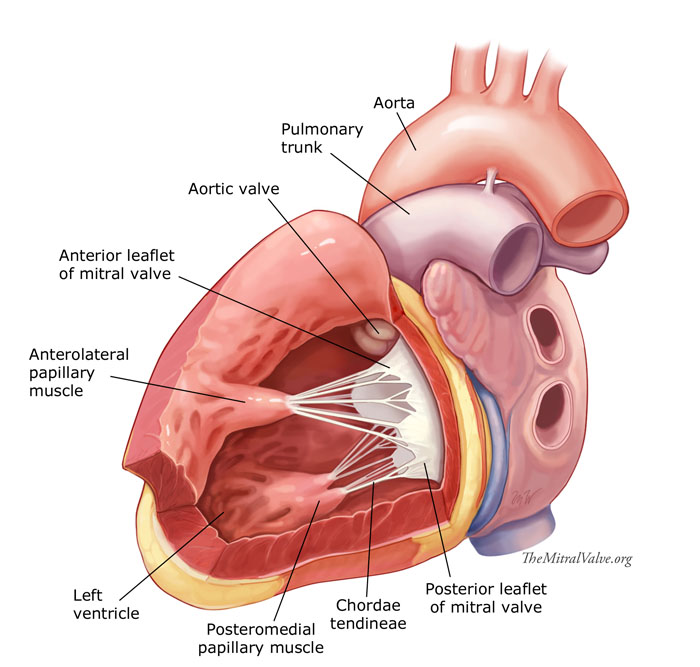The subvalvular apparatus consists of chordae tendinae and papillary muscles.

The chordae tendinae form the connection between the papillary muscles and the leaflets. They are classified according to the site of insertion between the free margin and the base of leaflets. Marginal chordae (primary chordae) insert on the free margin of the leaflets and prevent their upward displacement above the plane of the annulus during systole. The distance between two marginal chordae is rarely greater than 3-4 mm. Intermediary chordae (secondary chordae) insert on the ventricular surface of the leaflets and reduce excess tension on the valve leaflets. Basal chordae (tertiary chordae) are attached to the base of the posterior leaflet or to the annulus. They arise from the papillary muscle or from the ventricular wall. The length of the chordae tendinae depends on the length of the papillary muscles and their level of ventricular implantation.
Two papillary muscles arise from the area between the apical and middle thirds of the left ventricular wall. The anterolateral papillary muscle is commonly composed of one head and the posteromedial papillary muscle of two heads. Each papillary muscle provides chordae tendinae to both leaflets. The two videos below show papillary muscles and marginal chordae of the mitral valve.
The anterolateral papillary muscle vasculature is supplied by both the left anterior descending artery and the diagonal or a marginal branch of the circumflex artery. The posteromedial papillary muscle vasculature is supplied by either the left circumflex or the right coronary artery. Because of its single system of blood supply, the posteromedial papillary muscle is affected by myocardial ischemia more commonly than the anterolateral papillary muscle is. The lateral wall of the left ventricle should be considered part of the mitral valve complex because of the attachment of the posteromedial papillary muscle at its level. This structure plays a major role in the pathogenesis of mitral regurgitation in patients with ischemic cardiomyopathy.